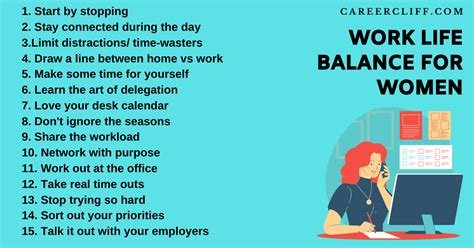Ways to Find Balance in Women’s Daily Lives
As women, our daily lives can often feel like a juggling act, trying to manage personal and professional commitments while also taking care of ourselves. Finding balance in our day-to-day routines is essential for our overall well-being. In this blog post, we will explore various strategies and tips to help women achieve a sense of equilibrium in their lives. From prioritizing self-care and establishing a daily routine for better time management to utilizing technology to streamline tasks and embracing mindfulness to reduce stress, we’ll cover a range of practical approaches. Additionally, we’ll discuss the importance of seeking support through community and networking, maintaining a healthy work-life balance, and creating boundaries to manage personal and professional demands. We’ll also delve into the significance of exploring hobbies and passions for personal fulfillment. Join us as we navigate the journey towards finding balance in our busy lives.
Prioritizing self-care for overall well-being
Self-care is essential for maintaining overall well-being, and yet it is often overlooked in the hustle and bustle of daily life. Prioritizing self-care means intentionally setting aside time to nurture your physical, emotional, and mental health. This can include activities such as exercise, rest, relaxation, and engaging in activities that bring you joy and fulfillment.
It’s important to recognize that self-care is not selfish, but rather a necessary component of a healthy and balanced life. When you take care of yourself, you are better equipped to handle life’s challenges and support those around you.
Setting boundaries and learning to say no when necessary are important aspects of prioritizing self-care. It’s about recognizing your own limits and needs and making them a priority.
By making self-care a non-negotiable part of your routine, you are taking proactive steps towards overall well-being and setting the stage for a happier, healthier life.
Establishing a daily routine for better time management
Establishing a daily routine is essential for better time management. By structuring your day, you can prioritize tasks and allocate specific time slots for different activities. Whether it’s work, exercise, meals, or relaxation, having a set routine can help you make the most of your time and reduce the likelihood of procrastination.
One way to begin establishing a daily routine is by creating a schedule that aligns with your natural energy levels. For instance, if you’re a morning person, you may want to allocate the early hours of the day for your most important tasks, such as work or exercise. On the other hand, if you tend to feel more alert in the evening, you might want to schedule your most demanding activities for later in the day.
It’s also important to incorporate breaks and downtime into your daily routine. Overloading your schedule with back-to-back tasks can lead to burnout and decreased productivity. By balancing work and rest, you can maintain your energy levels and avoid feeling overwhelmed.
Furthermore, consistency is key to the success of your daily routine. It may take time to establish new habits, but by sticking to your schedule and making adjustments as needed, you can create a sustainable routine that promotes better time management and overall well-being.
Embracing mindfulness to reduce stress
Embracing mindfulness can significantly reduce stress in our daily lives. It involves being fully present in the moment and acknowledging our thoughts and feelings without judgment. This practice allows us to cultivate a sense of calm and inner peace, leading to a reduction in stress levels.
One way to embrace mindfulness is through meditation. Taking a few minutes each day to sit quietly and focus on our breath can have a profound impact on our mental well-being. It helps to quiet the mind and create a sense of clarity and tranquility.
Another way to practice mindfulness is by engaging in mindful activities such as walking, eating, or even cleaning. By bringing our full attention to the present moment, we can alleviate stress and anxiety while enhancing our overall sense of well-being.
Embracing mindfulness is a powerful tool for reducing stress and improving our mental and emotional health. By incorporating mindfulness into our daily lives, we can experience greater peace, resilience, and a deeper sense of fulfillment.
Utilizing technology to streamline tasks
Advancements in technology have revolutionized the way we approach our daily tasks, allowing us to streamline our processes and become more efficient. From simple smartphone apps to complex project management software, technology offers a wide range of tools to help us manage our work and personal lives more effectively.
One way to utilize technology to streamline tasks is by leveraging the power of automation. By setting up recurring tasks and automated reminders, we can reduce the time and effort required to manage repetitive responsibilities. For example, scheduling automated emails or alerts for upcoming deadlines can help us stay organized and on top of our commitments.
Another valuable use of technology in task streamlining is the adoption of collaborative platforms. These platforms enable real-time collaboration and document sharing, which enhances team productivity and removes barriers to communication and file management.
Furthermore, the integration of project management tools can help in organizing and monitoring tasks more efficiently. These tools often offer features for setting priorities, tracking progress, and assigning responsibilities, which can contribute to a more structured and productive approach to task management.
Seeking support through community and networking
One of the most important aspects of personal and professional growth is seeking support through community and networking. Building connections with like-minded individuals and supportive communities can provide valuable resources, information, and encouragement to navigate both personal and professional challenges.
Networking allows for opportunities for collaboration, mentorship, and learning from others’ experiences. Whether it’s through industry events, social media groups, or professional organizations, connecting with others in your field can offer a wealth of knowledge and insight.
Community support also plays a crucial role in personal development. Surrounding yourself with positive influences and individuals who share similar goals and values can provide a sense of belonging, motivation, and emotional support during difficult times.
Whether it’s through local meetups, online forums, or support groups, being part of a community can create a sense of accountability and camaraderie, helping individuals stay grounded and focused on their personal and professional aspirations.
Maintaining a healthy work-life balance
Life can often feel like a juggling act, with work and personal commitments pulling us in different directions. It’s essential to maintain a healthy work-life balance in order to prevent burnout and ensure overall well-being.
One way to achieve this balance is by setting clear boundaries between work and personal time. This may involve logging off from work emails at a certain time each day, or unplugging from technology during weekends and holidays.
Another important aspect of maintaining a healthy work-life balance is prioritizing self-care. This means making time for exercise, hobbies, and relaxation in order to recharge and rejuvenate.
Ultimately, maintaining a healthy work-life balance is an ongoing process that requires awareness, commitment, and the ability to adjust as needed. By setting boundaries, prioritizing self-care, and being mindful of your time, you can achieve a greater sense of balance and fulfillment in both your personal and professional life.
Creating boundaries to manage personal and professional demands
Creating boundaries to manage personal and professional demands is essential for maintaining a healthy work-life balance. It is important to set limits on the amount of time and energy that is dedicated to work and personal life. By creating these boundaries, individuals can prevent burnout, reduce stress, and improve overall well-being.
One way to create boundaries is to establish a clear separation between work and personal time. This may involve setting specific hours for work and committing to not bringing work-related tasks into personal time. Additionally, setting boundaries on the use of technology can help separate personal and professional life, allowing for more focused and uninterrupted time for personal activities.
It is also important to communicate these boundaries to colleagues and family members. By clearly expressing the need for personal time and the importance of maintaining a healthy work-life balance, individuals can garner support and understanding from those around them.
Ultimately, creating boundaries to manage personal and professional demands is crucial for maintaining overall well-being and preventing the negative effects of stress and burnout. By setting limits on work-related tasks, establishing clear separation between work and personal time, and communicating these boundaries to others, individuals can achieve a healthier and more balanced lifestyle.
Exploring hobbies and passions for personal fulfillment
Exploring hobbies and passions is an essential aspect of personal fulfillment and well-being. Engaging in activities that bring joy and excitement can significantly contribute to overall happiness and satisfaction.
When individuals take the time to explore their interests and hobbies, they are able to tap into their creativity and express themselves in meaningful ways. Whether it’s painting, playing a musical instrument, gardening, or cooking, dedicating time to hobbies allows for personal growth and self-discovery.
Furthermore, engaging in hobbies and passions can provide a much-needed break from the stresses of everyday life. It offers an opportunity to relax, unwind, and recharge, thus reducing feelings of anxiety and tension.
Ultimately, exploring hobbies and passions is a valuable means of self-care and personal fulfillment. It allows individuals to pursue activities that bring joy, fulfillment, and a sense of purpose, leading to a more balanced and enriched life.
Frequently Asked Questions
How can women prioritize self-care for overall well-being?
Women can prioritize self-care by setting aside time for activities that bring them joy and relaxation, such as exercise, hobbies, or socializing with loved ones.
What are some tips for establishing a daily routine for better time management?
Tips for establishing a daily routine include setting specific times for tasks, limiting distractions, and breaking down larger tasks into smaller, manageable steps.
How can women embrace mindfulness to reduce stress in their daily lives?
Women can embrace mindfulness by practicing techniques such as meditation, deep breathing, and staying present in the moment.
What are some ways women can utilize technology to streamline tasks and improve efficiency?
Women can use technology for tasks such as organizing schedules, managing finances, and automating repetitive tasks.
How can women seek support through community and networking to enhance their daily lives?
Women can seek support by joining groups or online communities, attending networking events, and connecting with like-minded individuals for advice and encouragement.
What are some strategies for women to maintain a healthy work-life balance?
Strategies for maintaining a healthy work-life balance include setting boundaries, prioritizing tasks, and delegating when possible.
How can women create boundaries to manage personal and professional demands in their daily lives?
Women can create boundaries by establishing clear expectations, communicating their needs, and learning to say no when necessary.
What are some ways women can explore hobbies and passions for personal fulfillment?
Women can explore hobbies and passions by trying new activities, setting aside time for creative pursuits, and seeking out opportunities for personal growth and fulfillment.






